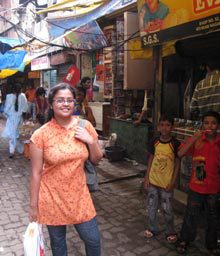Pronita Saxena Humanities and Social Science
Technology Buy-In: Gaps between the Ability to Pay and the Willingness to Adopt Point-of-Use (POU) Water Treatment Technology
Anecdotal evidence suggests an information gap isn’t the sole propagator of preventable water-borne diseases in urban slums: behavior change is multivariate. Through household surveys, I wish to understand how financial decision-making structures and other socio-economic factors condition the likelihood that a particular household will or won’t treat its water. To challenge the idea that with limited income, spending is allocated first to some universal standard of basic needs and then to “unessential” goods, I am also recording current technology investments (such as televisions, radios, etc.) within households to reconfigure “affordability” and more accurately estimate payment for point-of-use filters. By identifying the determinants of demand for water treatment technology, I hope to fuel more effective policy and sustainable technological interventions as we attempt to bring safe drinking water to 1.2 billion people across the world.
Message To Sponsor
SURF facilitated my first foray into the world of independent academic research: a rare opportunity I anticipated for years. Entering the slums of Mumbai - a microcosm previously foreign to me- challenged my comfort limits. My newfound ability to navigate the pitch-black, rat-infested passages that lead to people&Mac226;s homes, however, and more importantly, the personal relations that resulted from facilitating research created an empowering experience. It seems building mutually beneficial bridges across completely different worlds only requires an open mind and a good dose of gumption. Just sitting in a square, watching kids playing cricket and smiling to myself when realizing how much the 175,000 people in this square kilometer have to teach me just reinforces that conviction.